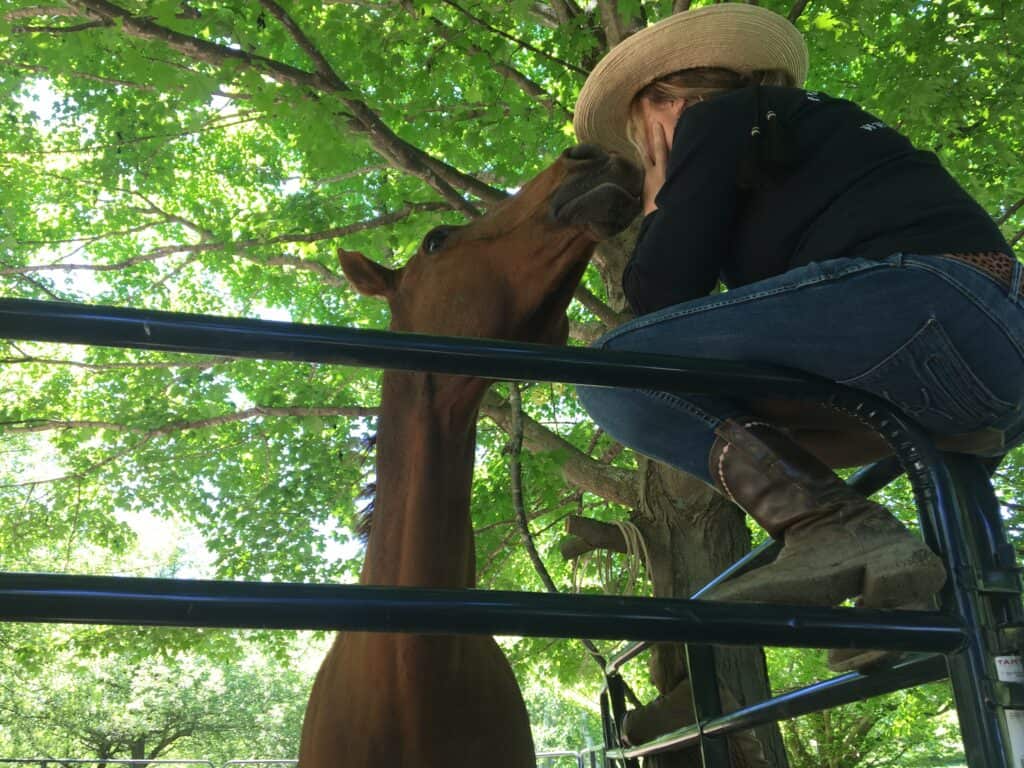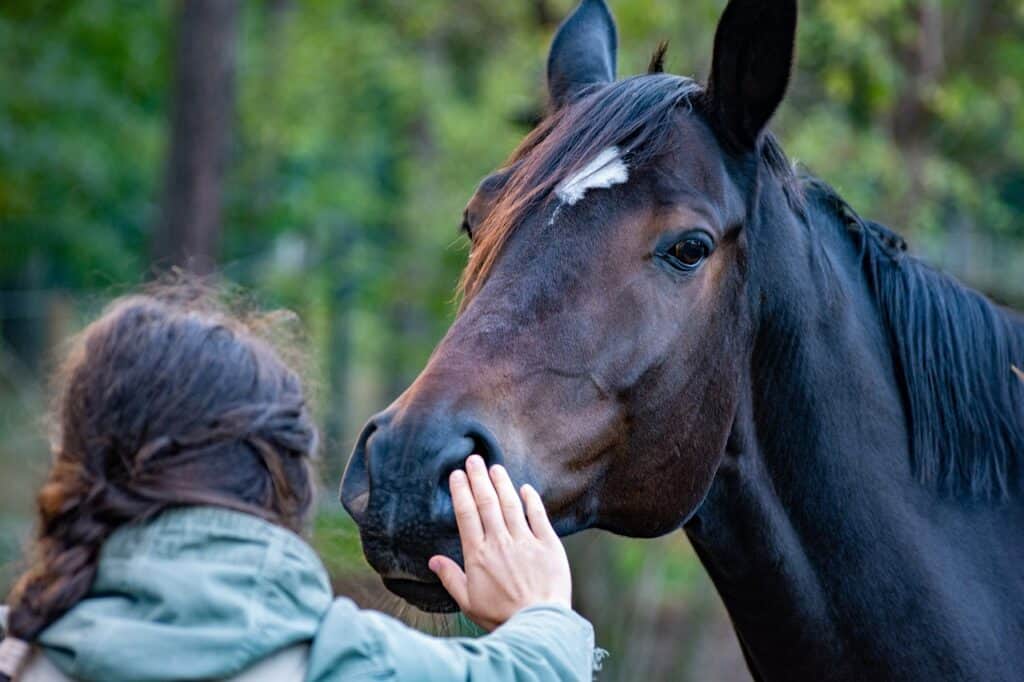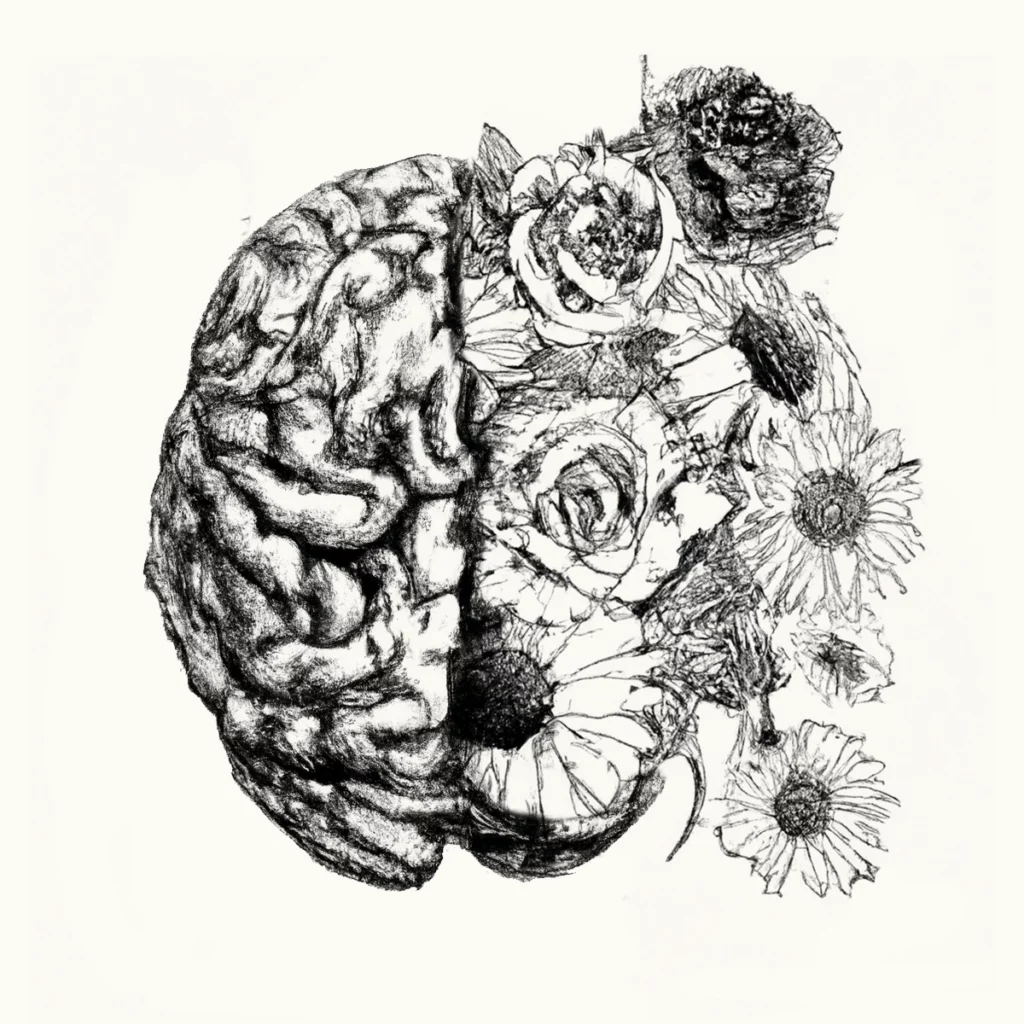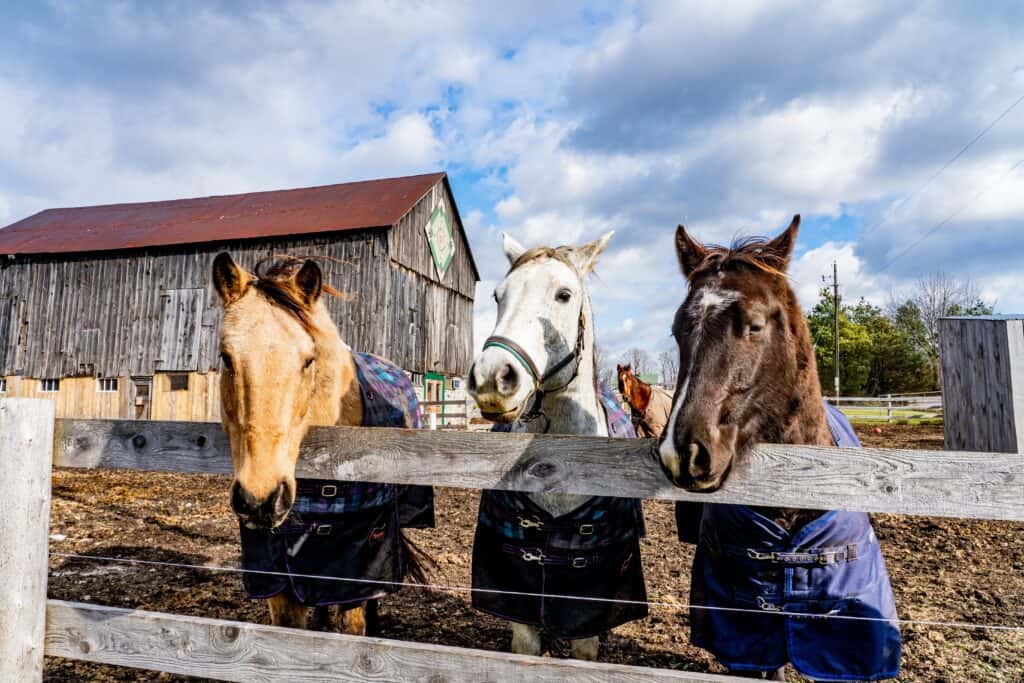The rain is coming and I’m already in the process of tacking my mare up for a very, very brief experience of helping her to do some stretches and subtle flexion while online and in transitions. It’s not a “training” goal for me, but rather a feeling that I am hoping to give her, of being able to experience relaxation from the trot the walk, walk to canter. It’s a very subtle progression that we have built up to over a series of weeks. My intention was to give her the feeling of settling into relaxation and balance at the walk, doing the same in the trot, then into the canter. All online.
I also made the commitment to myself that we would not go into the next gait until as one unit, even with me on the ground, we were both physically and mentally relaxed. My logic is that, why bother taking a brace into the gait above it, if the gait below it is where tension builds? My sense is this is not coming from a place of thinking that I am a “horseman” or “trainer,” but rather my gut, an archive of what others have taught me, and also lessons that have nothing to do with horsemanship.
Yoga teaches me to consider why would we reach and extend into a more complicated “expression” of an asana (pose), if the base asana, our foundation, is unstable, both internally and externally. Why would one extend into a full expression of Natarajasana, (Dancer’s Pose), rooted with one foot on the ground, while the other arcs overhead, our heart opening, chest expanding, while we are only still just struggling to find the balance when standing on one foot? The answer to why we ignore the foundation is that our ego is doing the pose, and our head is leading, as opposed to the embodied sense of being, and coming from our hearts.
In the horsemanship world, like me, many of us have heard the phrase “end it on a good note,” or some version of it. The reminder is for us to end the training with a positive learning moment that sets the foundation for our next moment, interactions with our horse, and the next learning opportunity. Instead of drilling our horses, over and over, we offer them the chance to be successful, to have the learning, and then marinate in that, which sets us up for continued incremental learning, next time, or even for the next moment in our time together.
As the rain begins to settle into a lighter pace, my mare settles nicely into a relaxed trot, to which I feel into that this is the time to slightly expand into the energy of what a canter feels like in my body. I feel open, expansive, and calm. I ask, and she responds and shifts to the canter with the same relaxation, I bring her right back to the trot, for this, at this point, is not about her maintaining it, but just the transition. We are both settled. Feels good. I do the same to the right, as her trot to the right was equally relaxed. I ask for the canter, and she braces.
So, instead of “pushing,” “driving,” or “making her” I consider, instead, that she’s communicating something to me that’s different between the left and right. I give her the benefit of the doubt. Increasing pressure and ignoring that communication is not going to help. I dial it back and bring her back to the trot and the relaxation again a few times. Next time, she tips gently up to the canter, and we get a few relaxed steps when she transitions. I call it “good.” I’m not going to drill her. I “end up on a good note.”
I dropped the tack off of her, and we both stand there with a gentle rain washing over us, she’s not bridled, not haltered. Her choice to leave or stay. We stand shoulder to shoulder in this way, for ten minutes, just breathing together. Her back leg is cocked and resting, and her eyes are soft. My sense is that we are both in a positively valenced state. We are both in a state of calm. No agenda but just sharing this moment.
I reflect on our time and began to consider the steps I took from a “training” perspective. At the end of the day, from a learning perspective, yes, we ended on a “good note.” It certainly can build us up for success the next time. Yes, from a training perspective she “did” the behavior of cantering and was able to do so in relaxation. But, if she hadn’t, and wasn’t able to, I would have recalibrated and looked at the communication from her as information. If my goal was relaxation in the transition, she had it in the one prior, and that would have to be enough, for now, and we would have to build on it.
My ego might have disagreed, and even someone reading that about the decision, a better horseman, might do it differently. But, that’s not the point. What is the point, is that to stay in my integrity, “ending on a good note,” could not just be about “doing or not doing” the thing I asked i.e. what the ego may identify as “ending on a good note.” Perhaps “ending on a good note” is also relative. How we define it, can also be based on ego, as opposed to the sense of whether we are ending the experience with a “state” that is also a “good note” for the horse, and not in spite of it.
In other words, if I had focused only on if I “got” what I wanted, what I was looking for, if my ego won out, I would have driven harder for the canter to “get it,” as opposed to looking at how the relaxation state could be achieved by dialing this back. I would also have also sacrificed the beautiful moment that we shared together, the continued relaxation, that presented itself also at the end when we spent time together, just standing still. It’s still a gait after all.
Yoga also reminds me that an asana, (pose) that feels good to me, may feel expansive and open, while to you, it might feel restrictive and bracy. So, “ending on a good note” in a pose, is relative to the practitioner, and is dependent upon how one defines “good.” Is “good” and ending on a good note dependent on what the ego defines as good? Do we think that we, or our horse “did that well,” or “succeeded” because they “did the thing?”
Could we also consider the idea that defining “good,” is also to consider the state that we, and our horse, are “ending in?” If I finished a yoga class, with the sense that I never could do the pose, was asked to do more than I was ready for, and couldn’t get the basics, and it didn’t have any states of feeling “good,” as a state of being, then why would I want to go back? And in turn, why would a horse want to greet us at the gate, if that not-so-good feeling state is then associated with us? Perhaps the “good,” is actually not about doing, but rather about helping ourselves, and our horses, to know that a positively valenced state is available to us. Perhaps our horsemanship can help us to remember that the internal state of feeling “good,” can be energetically and physically quite different than “doing” good as our ego might define it to be. That’s not to say that we don’t get uncomfortable when we and our horses stretch, learn and expand. Learning requires it, but in doing so, perhaps we can also track if we are allowing time and space for the expansion of feeling good, not just doing good in our horsemanship, just as in all things, perhaps things might just work out okay too.




